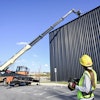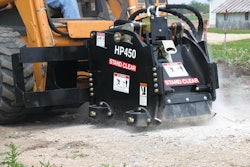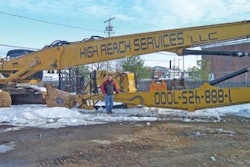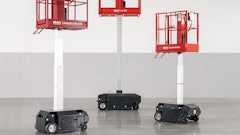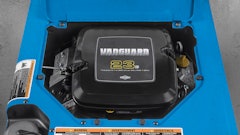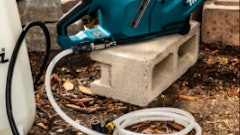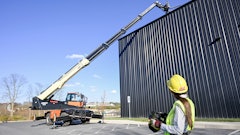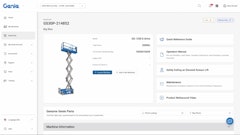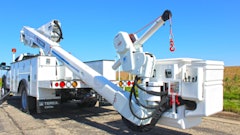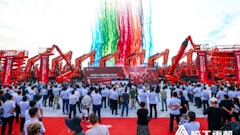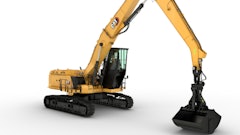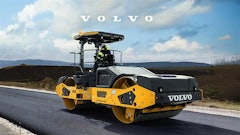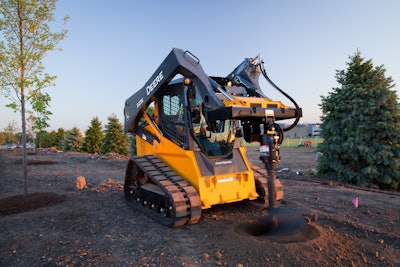
To remain competitive in today’s market, rental companies need to look beyond the basics. This means thinking about how your fleet of compact equipment can squeeze more margins and volume, and a strong attachment rental program can help you get there. Attachments are the key to compact equipment versatility and expanding your business model through diversification.
Derek Betcher, rental marketing manager, and Gregg Zupancic, product marketing manager for John Deere Construction & Forestry, answer questions about the importance of attachments for rental companies, factors to consider as you develop or reevaluate your current attachment program and how these programs can enable their business to be sustainable over the long term.
Rental: From your perspective, why is a strong attachment program beneficial to rental companies?
Betcher: In two words, it’s utilization and versatility. For rental companies to be financially successful they need strong utilization. They need the assets in their fleet to be out on rent as often as possible, providing value to their customers and generating a strong return.
The attachment is then valuable because it gives rental companies another avenue to increase the versatility of any compact machine base unit, allowing more customers to do more work that a machine by itself would be poorly suited for.
Zupancic: Part of that equation is the financial return. Rental companies can get a premium rate for a machine that’s more versatile, and can do more work or more difficult work in many different applications. For any type of job you might think of, there’s likely an attachment for it. There are buckets, hammers, thumbs, grapples, trenchers, breakers, forks, augers, rakes and stump grinders (to name a few) and even more that can transform compact machines into multi-functional equipment to meet the varying needs of rental customers.
Rental: How do attachments increase a machine’s versatility?
Zupancic: It’s really quite simple – the attachment makes the machine different and your opportunities are broadened by the piece you put on the front of it. Successful rental companies are the ones who can make these machines as productive as possible on as many different jobsites as possible.
I would say that 80 percent of all skid steers or compact track loaders are sold or rented into three broad categories: construction, landscape and agriculture. Each segment has opportunities to supplement the existing units in their fleets. Help your customers identify these opportunities. You can rent to more than just your typical contractor if you have a nice selection of popular attachments that are really focused on all of the diverse segments. Attachments will keep the machine more marketable and more rentable depending on the customer who walks through the door. Even new customers offer an opportunity to build a relationship – one they might not be able to foster with a limited selection of attachments.
Betcher: The way that you grow your business is to sell more to your existing customers or to sell to new customers, and in both cases, attachments can open up those doors. We have a saying in our department that “rental doesn’t create demand, rental fills demand.” The smart strategy is to evaluate customer needs in your markets and provide attachment solutions to meet those needs. Always ask yourself: “can I get my hands on attachments that will help make my customers more productive and lead to rental growth?”
Rental: What are some tangible ways rental companies can strengthen or expand an existing attachment rental program?
Zupancic: Every customer provides an opportunity to rent another machine or attachment. Maybe they only take advantage of an add-on 20 percent of the time, but having the inventory to show you are in the business of providing solutions, and reminding customers of the options available to them, helps you build a value relationship.
If you’re committed to stocking attachments and having machines that can run them, you need to be dedicated to selling them. You need to be ready help educate your customers. That is a service rental companies should always provide.
Betcher: One strategy I like is the old “would you like fries with that?” approach. When you know your customers, their industry and all of the potential attachment needs on different kinds of work sites, it can be an excellent upsell and customer service technique. It’s knowing to ask if they need a breaker for that mini excavator, or a broom for cleaning up at the end of the day. The easiest example would be forks. Any skid steer operator handling bulk material with a standard bucket may be on a jobsite where they also have to offload palletized material, so you could ask “would you like forks with that?”
Rental: What type of financial return can rental companies expect with an attachment rental program in place?
Betcher: Generally speaking, properly stocking attachments based on your market can be a low initial investment with a high return. Many attachments cost a fraction of what the base machine does, but you now have the ability to significantly increase your rate. The rental rate with a specialized attachment like a hydraulic breaker can be up to double the rate of a compact machine alone, which I’m sure, is very attractive to any rental company.
Rental: What are some of the most commonly rented attachments that rental companies should consider as part of their fleet.
Zupancic: Must-have attachments include:
- Forks
- Buckets/Multipurpose buckets (aka 4-in-1 buckets)
- Augers & Trenchers
- Hydraulic Hammers/Breakers
- Grapples
- Brooms
Beyond this list, it all goes back to knowing your customer segment, niche businesses or applications they may work in and attachments they may they need to supplement their work.
Popular niche attachments include:
- Cold Planers
- Rotary Cutters
- Mulching Head
- Snow blowers/Snow blades
- Graders & Boxblades
Rental: What is one thing rental companies may not be thinking about when renting attachments?
Betcher: Implementing strong inventory control procedures is a smart strategy rental professionals should always consider as part of their attachment program. Lost inventory is lost revenue.
Zupancic: If you want to rent top-notch equipment, you need to be able to offer top-notch attachments and be prepared to service them. That said, your rates must reflect your assets. Attachments often have a lot of ground engaging components, which translates to a lot of wear. It’s important to make sure you’re getting a rental rate that helps you replace the wear components. Whether it’s bristles on a broom, or teeth on a trencher, you want to be sure to factor in compensation for any wear or improper use of the attachment.


